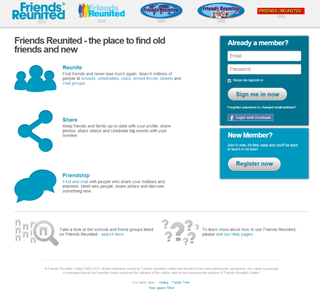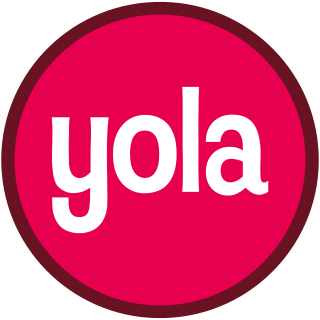Kleiner Perkins, formerly Kleiner Perkins Caufield & Byers (KPCB), is an American venture capital firm which specializes in investing in incubation, early stage and growth companies. Since its founding in 1972, the firm has backed entrepreneurs in over 900 ventures, including America Online, Amazon.com, Tandem Computers, Compaq, Electronic Arts, JD.com, Square, Genentech, Google, Netscape, Sun Microsystems, Nest, Palo Alto Networks, Synack, Snap, AppDynamics, and Twitter. By 2019 it had raised around $9 billion in 19 venture capital funds and four growth funds.

LinkedIn is a business and employment-focused social media platform that works through websites and mobile apps. It was launched on May 5, 2003 by Reid Hoffman and Eric Ly. Since December 2016, LinkedIn has been a wholly owned subsidiary of Microsoft. The platform is primarily used for professional networking and career development, and allows jobseekers to post their CVs and employers to post jobs. From 2015, most of the company's revenue came from selling access to information about its members to recruiters and sales professionals. LinkedIn has more than 1 billion registered members from over 200 countries and territories.

Friends Reunited was a portfolio of social networking websites based upon the themes of reunion with research, dating and job-hunting. The first and eponymous website was created by a husband-and-wife team in the classic back-bedroom Internet start-up; it was the first online social network to achieve prominence in Britain, and it weathered the dotcom bust.

Myspace is a social networking service based in the United States. Launched on August 1, 2003, it was the first social network to reach a global audience and had a significant influence on technology, pop culture and music. It also played a critical role in the early growth of companies like YouTube and created a developer platform that launched the successes of Zynga, RockYou and Photobucket, among others. From 2005 to 2009, Myspace was the largest social networking site in the world.
SixDegrees.com was a social network service website that initially lasted from 1998 to 2000 and was based on the Web of Contacts model of social networking. It was named after the concept of six degrees of separation and allowed users to list friends, family members and acquaintances whether registered on the site or not. External contacts were invited to join. People who confirmed a relationship with an existing user but did not go on to register with the site continued to receive occasional email updates and solicitations. Users could send messages and post bulletin board items to people in their first, second, and third degrees, and see their connection to any other user on the site.

Meebo was an instant messaging and social networking service provider. It was founded in September 2005 by Sandy Jen, Seth Sternberg, and Elaine Wherry, and was based in Mountain View, California. Initially the company offered a web-based instant messenger service, extending its offer in more general online chat and even social networking directions. In June 2012, Google acquired Meebo to merge the company's staff with the Google+ developers team.

Flock is a discontinued web browser that specialized in providing social networking and Web 2.0 facilities built into its user interface. Earlier versions of Flock used the Gecko HTML rendering engine by Mozilla. Version 2.6.2, released on January 27, 2011, was the last version based on Mozilla Firefox. Starting with version 3, Flock was based on Chromium and so used the WebKit rendering engine. Flock was available as a free download, and supported Microsoft Windows, Mac OS X and, at one time, Linux as well.

hi5 is an American social networking service based in San Francisco, California. It is owned by The Meet Group.

OpenSocial is a public specification that outlines a set of common application programming interfaces (APIs) for web applications. Initially designed for social network applications, it was developed collaboratively by Google, MySpace and other social networks. It has since evolved into a runtime environment that allows third-party components, regardless of their trust level, to operate within an existing web application.
Whrrl was a social location-based service developed by the Seattle-based company Pelago, Inc. Whrrl had a recommendation engine that uses algorithms and users' votes to surface relevant recommendations.
Google Friend Connect was a free social networking site, active from 2008 to 2012. Similar to Facebook Platform and MySpaceID, it allowed users to build a profile to share and update information through messaging, photographs and video content via third-party sites which acted as a host for profile sharing and social exchanges.

Social networking is one of the most active web-based activities in the Philippines, with Filipinos being declared as the most active users on a number of web-based social media sites such as Facebook, Instagram, Snapchat, and Twitter. The use of social networking website has become so extensive in the Philippines that the country has been tagged as "The Social Media Capital of the World," and has also become part of Filipino Internet culture. Subsequently, social media is also used in the Philippines as a form of election campaign material, as well as tools to aid criminal investigation.
Snapvine was a Seattle, Washington startup company that specialized in providing voice-over-IP features for the users of social networks. The company was founded in 2005 by Joe Heitzeberg, who was the CEO of the company.

Yola is a website builder and website hosting company headquartered in San Francisco. However, it was founded in Cape Town, South Africa. People without programming and graphic design skills can make web sites using Yola. Its drag and drop system allows users to incorporate widgets without knowing HTML. Yola also integrates e-commerce and blog software and acts as a domain registrar. It competes with other web hosting and creation such as Wix, Weebly, Jimdo and Webs.

Path was a social networking-enabled photo sharing and messaging service for mobile devices that was launched on 14 November 2010. The service allows users to share up to a total of 50 contacts with their close friends and family. Based in San Francisco, California, the company was founded by Shawn Fanning and former Facebook executive Dave Morin.

Mike McCue is an American technology entrepreneur who founded or co-founded Paper Software, Tellme Networks, and Flipboard.

BranchOut was a Facebook application designed for finding jobs, networking professionally, and recruiting employees. It was founded by Rick Marini in July 2010, and was, as of March 2012, the largest professional networking service on Facebook. The company sold its assets to HR Software Company 1-Page in November 2014 and the staff was picked up by Hearst.
Graphiq is a semantic technology company that uses artificial intelligence to rapidly create interactive data-driven infographics. Its intent is similar to Wolfram Alpha which is designed to provide users with direct information on a variety of subjects rather than going through a search engine.
Jonathan Abrams is a Canadian engineer, entrepreneur, and investor. He is best known as the founder of Friendster where he worked from 2002 to 2005. He then founded Socializr, where he worked from 2005 to 2010, and Nuzzel, where he stayed from 2012 to 2018. He has invested in over 50 companies, including Docker and Instacart. He was the owner of a patent for a "System, method, and apparatus for connecting users in an online computer system based on their relationships within social networks". This, and Friendster's other patents, were bought by Facebook for $40 million in 2010.












